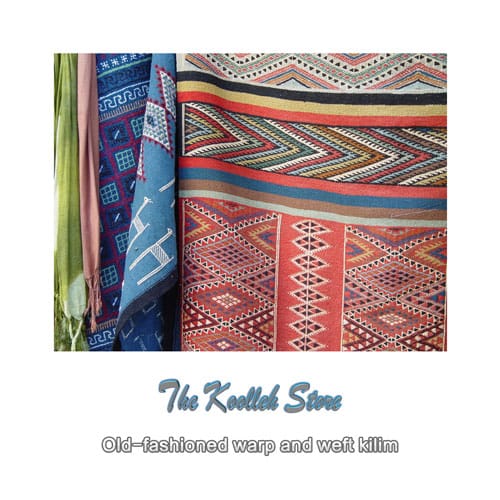Old-fashioned warp and weft kilim

The head of Ghaen Cultural Heritage, Handicrafts and Tourism said: Kilim has a longer history than carpets in our country, and in fact, carpets have emerged due to the evolution of kilim weaving over many centuries, because kilims have only taropods and taropods and lint rugs.
Shahrokh Abbasi stated: A kilim is a bed underlay, the difference with a carpet is that it does not have fluff, lint, sleep and knots.
He continued: Kilim has a longer history than carpets in our country, and in fact, carpets have emerged due to the evolution of kilim weaving over many centuries, because kilims have only taropods and carpets have taropods and lint.
The head of cultural heritage, handicrafts and tourism of Ghaen, stating that vertical and horizontal poles are used for weaving kilims, added: the kilims of each region have special characteristics in terms of design and color, although cotton thread is usually used for kilim yarn, but In some parts of our country, wool yarn is sometimes used as a yarn.
Abbasi stated: The use of maps in the texture of kilims is limited and the texture of this type of underlay is mainly subjective and its designs are broken and geometric.
He pointed out that Iranian kilims are generally divided into two categories, he said: kilims that are woven by weaving method, that is, only taropod yarn is used for weaving and the weft yarn gradually passes through the warp yarns of the desired design gradually on the kilim. It turns out that this method of weaving is almost common in most parts of our country.
The head of cultural heritage, handicrafts and tourism of Ghaen continued: Another type of kilims is Sumak kilims, which are woven in the method of twisted weave, that is, in addition to warp and weft yarn, thin weft is also used in weaving the kilim. It is crossed and then by passing a thin weft and then pounding it with a comb, the action of taropod threads is determined. This method of weaving has been considered by experts as an intermediary between kilim weaving and carpet weaving (in fact, the last home of the evolution of kilim weaving to carpet weaving).
Abbasi pointed out: in the weaving of the kilim known as Verni in the provinces of East Azerbaijan and Ardabil and also in the weaving of the kilim known as Shirki Pich which is common in Kerman province, such weaves are called Sumak.
He continued by stating that in Ghainat region, especially in rural and nomadic areas, from the distant past, kilim weaving has been highly flourishing and popular: the kilims of this region are double kilims on land plots with Persian weaving.
The head of Ghaen Cultural Heritage, Handicrafts and Tourism, emphasizing that the fibers used for the taropod of these kilims have been wool for a long time, said: The common colors in the kilns of Ghaenat area are camel or cream, lacquer, azure, brown and green.
Abbasi pointed out: In the past, kilim weaving was common in all areas of Ghainat, but now it is common in nomadic areas and some villages in the region, such as Zahan, Ahangaran, Shahrokht, Berkok, Razdenbol, Qomjanjan, Paskooh, Khezri and Bayaz plains.

